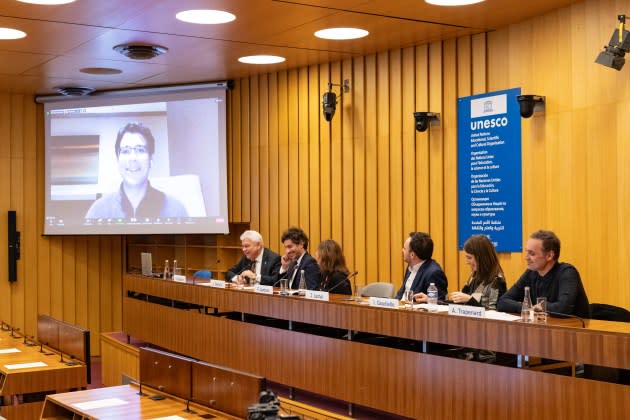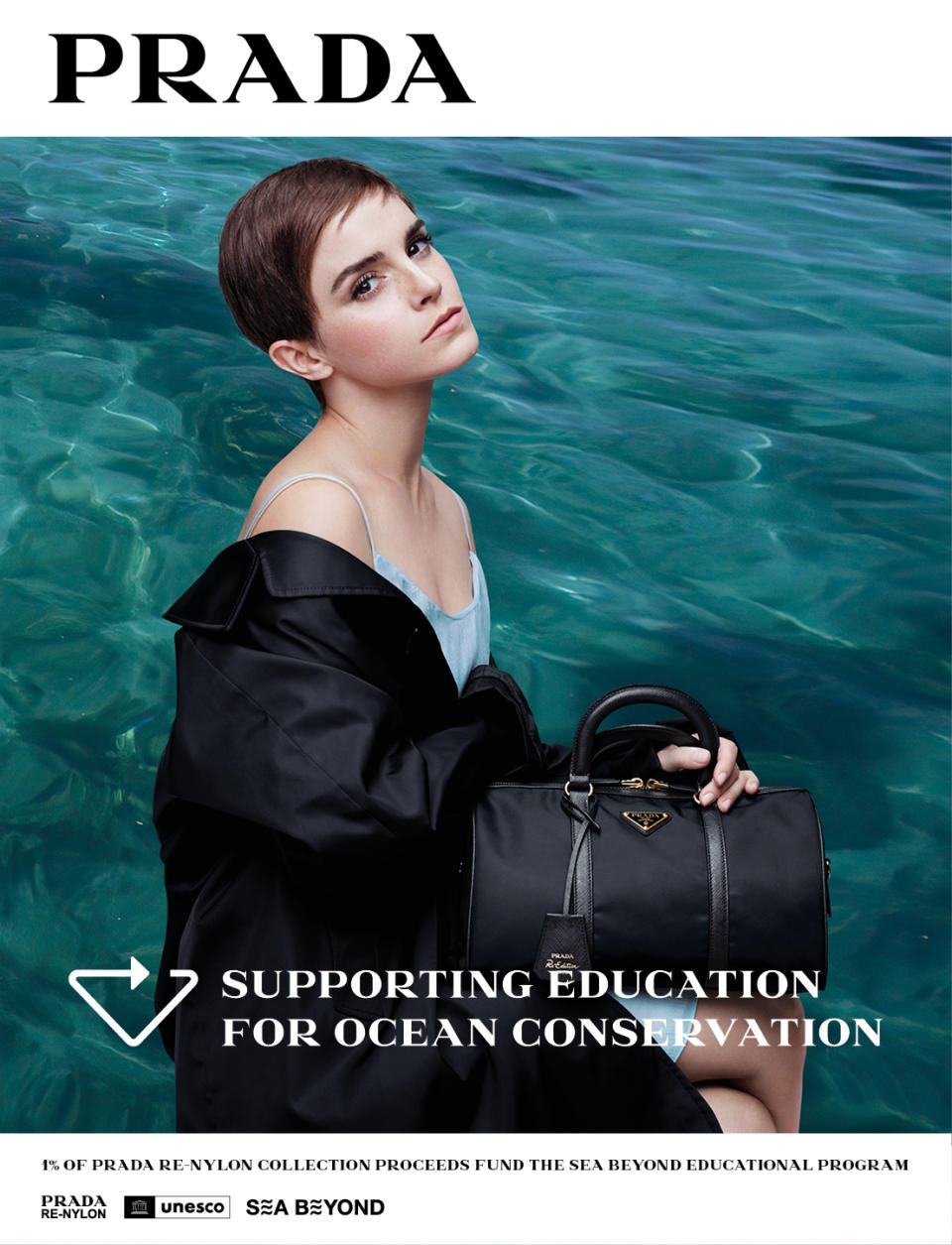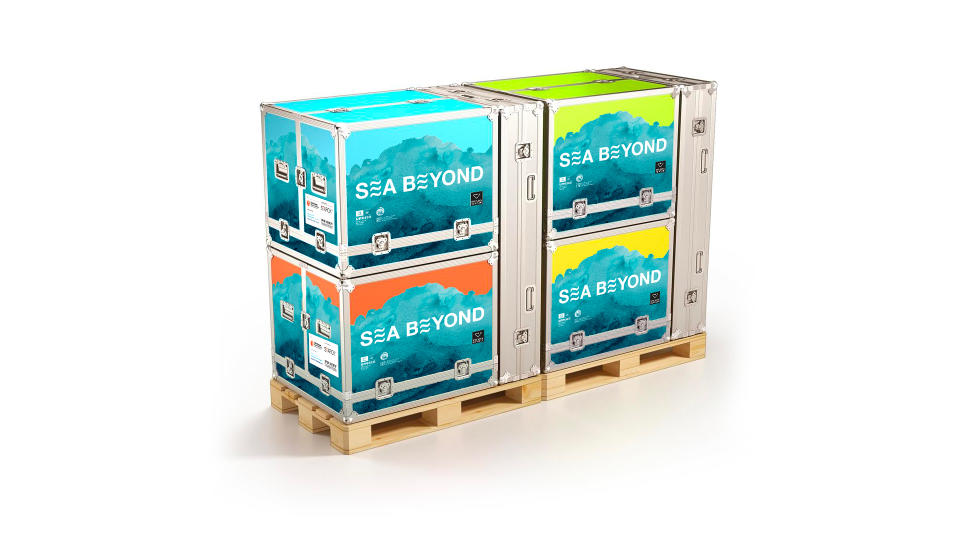Prada Group Expands Ocean Education to 56 Countries

Prada Group and UNESCO are expanding their joint ocean literacy efforts to 56 countries this year, aiming to educate and sensitize some 34,000 students with its Sea Beyond program.
Initiated in 2019 and now in its third edition, Sea Beyond training is to reach 184 secondary schools and focus on the interrelation between the ocean and climate, along with the environmental challenges wrought by human activity.
More from WWD
Prada, Fendi, Gucci Hits as Retailers Praise Elevated Sartorial Designs in Milan
Win Metawin Dons Distressed Leather for Prada Men's Fall 2024 Fashion Show
Dua Lipa Arrives in Rose-inspired Red Prada Dress for Critics Choice Awards 2024 Red Carpet
Prada revealed its 2024 ambitions Tuesday at a press conference at UNESCO headquarters in Paris in the midst of couture week, also unveiling a new partnership with Bibliothèques Sans Frontières (Libraries Without Borders, in English), extending the campaign’s reach into vulnerable communities in Italy and France in Europe, and Burundi and Ivory Coast in Africa.
“We are amazed by the amount of people that are participating.…It means that there is a lot of interest in this topic,” Lorenzo Bertelli, group head of corporate social responsibility at Prada, told WWD in an interview on the sidelines of the event. “We are super happy with the number we achieved. Even if it’s a small step, we hope in the future to even grow much more.”
Bertelli also acknowledged the “buzz” created by Prada’s Re-Nylon campaign featuring ambassadors Emma Watson and Benedict Cumberbatch, launched earlier this month. The Italian fashion brand donates 1 percent of all proceeds from its Re-Nylon collection to support Sea Beyond’s educational program, and is inviting its luxury peers to do the same.

Bertelli noted Prada Group is in conversations with Swiss watchmaker Panerai about Sea Beyond. “They are already doing a project with UNESCO and we are discussing a project that we would do together.”
Also on Tuesday, Prada said it has teamed with National Geographic Creative Works to create three new episodes around Re-Nylon and its regenerated nylon yarn, Econyl, made from recycled and purified plastics from the ocean, including fishing nets.
One was screened at the press conference, detailing how the Atlantic blue crab, an invasive species with no enemies and an insatiable appetite for shellfish, is wreaking havoc with men and women who make a living fishing clams and mussels in the Mediterranean.
One restaurateur explained how she is eager to adapt Europe’s food culture and create a market for the “tasty and sweet” blue crabs.
That protection requires understanding was a message that recurred during the press conference.
“When you deal with the ocean, you need to know it,” said Vladimir Ryabinin, executive secretary of UNESCO’s Intergovernmental Oceanographic Commission and assistant director-general of UNESCO, explaining that although mapping of the ocean floor commenced in 1903, only 5.5 percent of it had been completed by 2016.
In the past seven years, however, the number leaped to 25 percent, which is bringing science closer to being able to tsunami-proof coastal communities. Ryabinin also stressed that even landlocked countries depend on the ocean, since it is the world’s largest reservoir for carbon, and where half of all photosynthesis takes place.
Bertelli told the press conference that reaching as many young people with ocean literacy is crucial to “change the mindset of future generations” and prompt conversations about ocean preservation.
“Our hope is that some of those young students will be key leaders — maybe even a prime minister — and make more responsible and sustainable decisions,” he said.
Francesca Santoro, the IOC/UNESCO’s senior program officer, said educational resources are being developed to shift the narrative about the ocean “being the biggest victim to becoming our best ally to find solutions to the climate crisis.”
Santoro passed the mic to two students from MaArt — Newton College in Lima, Peru, which won an award from Sea Beyond last year and plowed the winnings into creating an NGO that will further spread ocean literacy.
“We do have the power to contribute to sustainable development goals,” MaArt student Enzo Porto declared, joining the meeting via a videoconference link. His school organized an art auction to raise money for local environmental groups, and a beach cleanup that yielded 30 bags of trash — and stronger emotional attachments to the ocean for all participants.
A contest in tandem with the third edition will invite schools to create awareness campaigns with text, graphics or interactive content that encourages more conscious behaviors to preserve the ocean.
Jérémy Lachal, executive director of Libraries Without Borders, told the press conference that its flagship tool, The Ideas Box, has been deployed everywhere from the biggest refugee camp in the world in Bangladesh to the Bronx, N.Y.

These mobile multimedia centers, design by Philippe Starck and equipped with books, games and internet-powered laptops and tablets, are to be adapted with content about environmental protection, and facilitated by local mediators, some of them former “street children” or those simply living in areas of educational poverty.
Ryabinin confessed that he wept upon learning how the Peruvian student Porto and his classmates are now taking up the cause with such conviction, drive and ingenuity. “Science multiplied by kindness and empathy will take us forward,” he said.
Best of WWD

